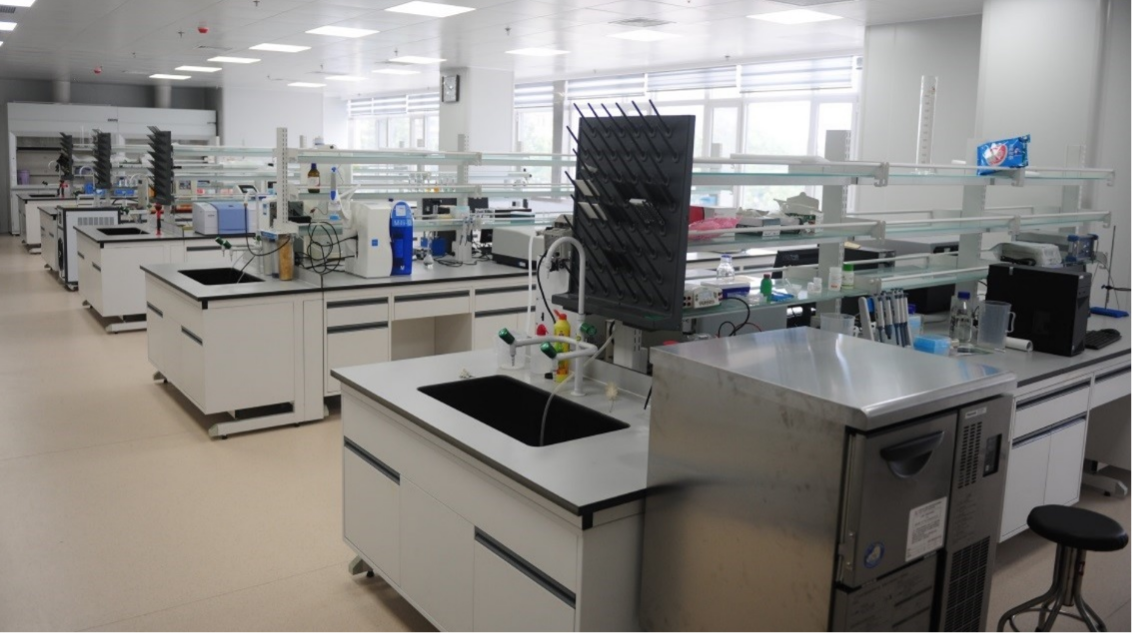I. Profile
The Molecular Imaging and Translational Medicine (herein after referred to as the “Laboratory”) of Binzhou Medical University is a Key Laboratory among institutions of higher education in Shandong, which was established in March 2017. The Laboratory is mainly based on the Institute of Medical Imaging, the Shandong Provincial Key Laboratory of Molecular Imaging in Medicine and Health field, and the Department of Imaging in Binzhou Medical University Hospital and Yantai Affiliated Hospital of Binzhou Medical University. During the 13th Five-Year Plan period, the Laboratory has built an advanced 7.0T MR imaging research platform for small living animals, a multispectral tomography photoacoustic scanning system for small animals and a new target analysis platform for major diseases, and has developed rapidly in the field of molecular imaging research.
II. The Team
The Laboratory currently has 31 full-time staffs, including 20 professors, 9 associate professors. Among all the staff members, 24 are doctoral degree holders, 7 master degree holders, three doctoral supervisors, 20 master supervisors, and two Taishan Scholars special experts. Besides, there is one provincial-level teaching team in Shandong Province, and one outstanding scientific research and innovation team in universities and colleges in Shandong Province. The Laboratory has formed stable research directions: (1) abdominal imaging and molecular imaging research by using a variety of magnetic resonance functional imaging techniques to evaluate the biological characteristics of prostate cancer, and provide imaging data support for clinical individualized treatment of prostate cancer; build a new multi-modal molecular imaging probe to explore a new evaluation system for the precise treatment of prostate cancer; a series of clinical and basic research on anti-vascular treatment of liver cancer. (2) tumor molecular imaging research and tumor biomarker identification and clinical translation research; anti-tumor targeted molecular probes and biotherapy research; angiogenesis cytokine signaling pathway research. (3) neuroimaging and molecular imaging research, central nervous system tumor research; brain trauma research; ischemic cerebrovascular disease research.
III. Academic Achievements
Since the establishment, 42 scientific research projects have been approved, including nine national-level projects, 21 provincial-level and ministerial-level projects, with a fund of RMB 18.08 million yuan and three provincial and ministerial scientific research awards have been awarded. More than 120 academic papers have been published, including 53 SCI indexed papers. Besides, there are two authorized invention patents and four software copyright registrations. Demonstration Collaborative Innovation Center for Molecular and Functional Imaging was approved as a higher-level scientific research platform among institutions of higher education in Shandong Province. The Laboratory hosted Qilu International Forum on Molecular Imaging for 9 consecutive years, during which, it also organized the Taishan Academic Forum—Clinical Application and New Progress of Molecular Imaging, the Special Branch of the Molecular Imaging Group of Radiology Annual Meeting by Chinese Medical Association, and the 6th National Molecular Imaging Academic Annual Meeting by the Chinese Medical Association and other high-level academic conferences.
IV. Infrastructure

Molecular Imaging Laboratory
There are 7.0T MR imager for small living animals, multispectral tomography photoacoustic scanning system for small animals, brain function audiovisual stimulation system, real-time functional magnetic resonance neurofeedback system, PACS image processing workstation, MRI performance testing phantom, CT performance testing Phantom, CT head dose phantom and body dose phantom, QA detection box, X, γ-ray dosimeter, CD/DR digital multi-function image detection phantom, fluorophotometer, ultraviolet-visible-fluorescence microplate reader, Nanometer particle size, Zeta potential and absolute molecular weight analyzer, refrigerated high-speed centrifuge, hypoxic cell culture workstation, etc. The equipment is worth more than RMB 16.2 million yuan.





